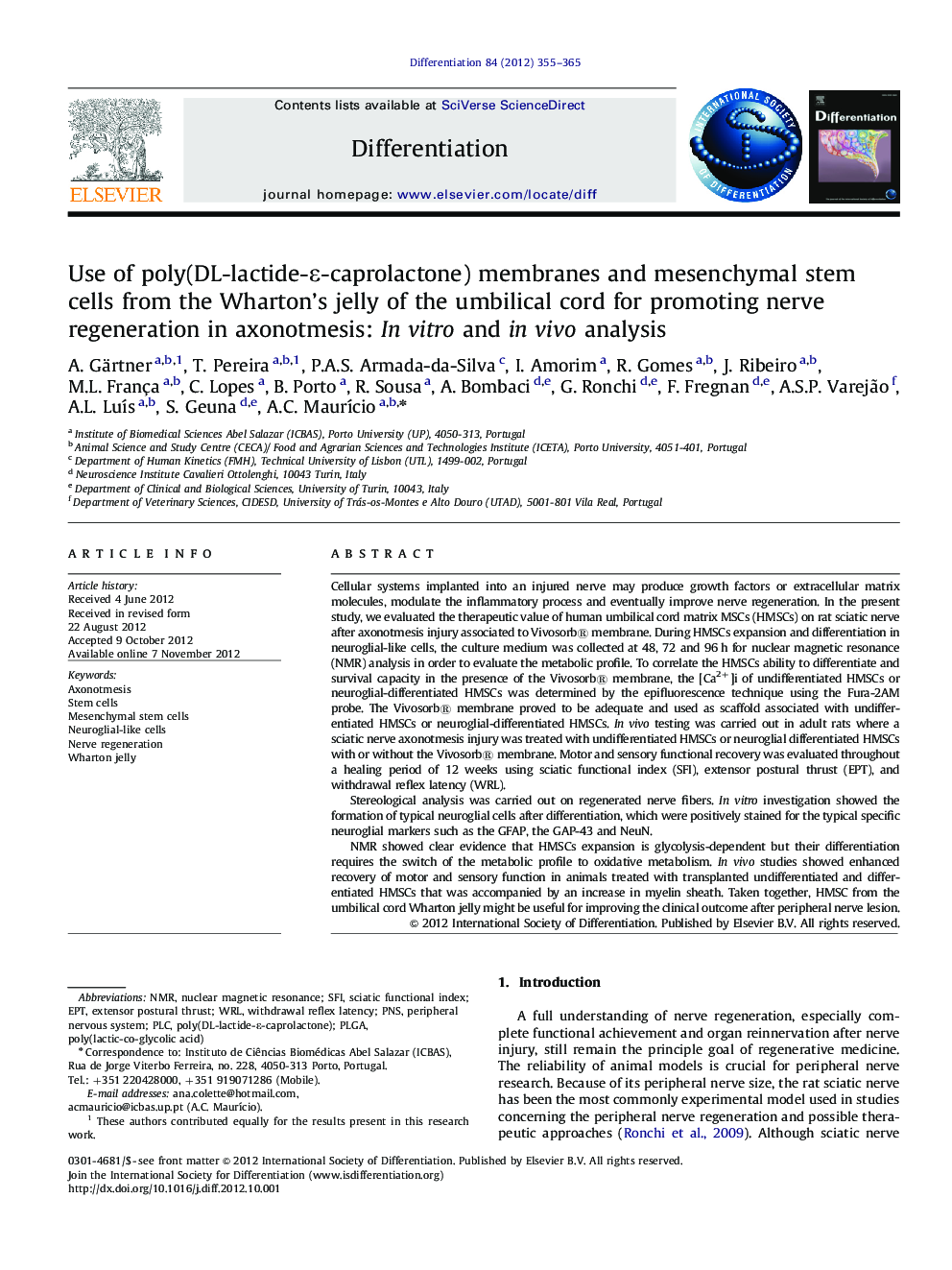| کد مقاله | کد نشریه | سال انتشار | مقاله انگلیسی | نسخه تمام متن |
|---|---|---|---|---|
| 2119571 | 1085402 | 2012 | 11 صفحه PDF | دانلود رایگان |

Cellular systems implanted into an injured nerve may produce growth factors or extracellular matrix molecules, modulate the inflammatory process and eventually improve nerve regeneration. In the present study, we evaluated the therapeutic value of human umbilical cord matrix MSCs (HMSCs) on rat sciatic nerve after axonotmesis injury associated to Vivosorb® membrane. During HMSCs expansion and differentiation in neuroglial-like cells, the culture medium was collected at 48, 72 and 96 h for nuclear magnetic resonance (NMR) analysis in order to evaluate the metabolic profile. To correlate the HMSCs ability to differentiate and survival capacity in the presence of the Vivosorb® membrane, the [Ca2+]i of undifferentiated HMSCs or neuroglial-differentiated HMSCs was determined by the epifluorescence technique using the Fura-2AM probe. The Vivosorb® membrane proved to be adequate and used as scaffold associated with undifferentiated HMSCs or neuroglial-differentiated HMSCs. In vivo testing was carried out in adult rats where a sciatic nerve axonotmesis injury was treated with undifferentiated HMSCs or neuroglial differentiated HMSCs with or without the Vivosorb® membrane. Motor and sensory functional recovery was evaluated throughout a healing period of 12 weeks using sciatic functional index (SFI), extensor postural thrust (EPT), and withdrawal reflex latency (WRL).Stereological analysis was carried out on regenerated nerve fibers. In vitro investigation showed the formation of typical neuroglial cells after differentiation, which were positively stained for the typical specific neuroglial markers such as the GFAP, the GAP-43 and NeuN.NMR showed clear evidence that HMSCs expansion is glycolysis-dependent but their differentiation requires the switch of the metabolic profile to oxidative metabolism. In vivo studies showed enhanced recovery of motor and sensory function in animals treated with transplanted undifferentiated and differentiated HMSCs that was accompanied by an increase in myelin sheath. Taken together, HMSC from the umbilical cord Wharton jelly might be useful for improving the clinical outcome after peripheral nerve lesion.
► Axonotmesis causes axonal interruption and induces functional loss.
► Wharton's jelly (WJ) is a non controversial source of MSCs.
► MSCs improve nerve regeneration and can differentiate into neuroglial-like cells.
► MSCs from WJ enhance the recovery of sensory/motor function.
► MSCs from WJ increase the myelin sheath of the regenerated fibers.
Journal: Differentiation - Volume 84, Issue 5, December 2012, Pages 355–365